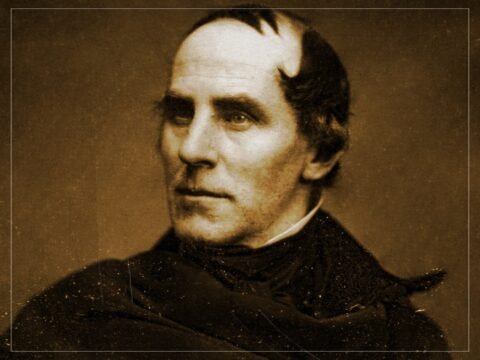Alfred Wolmark escaped the pogroms of eastern Europe to become one of the UK’s pioneering post-impressionist painters.
But his contribution to art history has flown under the radar in Australia.
His family hopes that placing four original artworks for public auction for the first time in Australia will change that.
“I think as Mum draws towards the end of her life, it’s really important that legacy continues on,”
Wolmark’s granddaughter Lexi Hall said.
“We’re very hopeful that a younger generation will actually like this style of painting again.”
Influenced by Rembrandt
While Wolmark’s descendants now live in the New South Wales Northern Rivers, he was born in 1887 in Warsaw, in Russian-controlled Poland, during a time of Jewish persecution.
His family fled to England in 1883, and by age 18, living in London’s East End, Wolmark was already becoming a prolific artist.
Wolmark painted his wife Bessie. (Supplied: Diana Hall/Menzies Art Brands)
“His early works often reflected Polish culture and his background from his birth country,”
Ms Hall said.
“He was quite influenced by Rembrandt and many of his paintings are quite dark.”
But Wolmark’s style took a marked turn after he got married, around 1910.
“He said my grandmother was the most beautiful woman he’d ever met in his life,” Ms Hall said.
“There is a portrait of their wedding and the whole place is strewn with irises and white roses.”
Wolmark began using bright colours in a style that was uncommon at the time, and was dubbed “the colour king”.
“He came in for a lot of criticism from fellow artists, including a famous quote from one fellow artist, Walter Sickert, who said, ‘You cannot see Mr Wolmark’s pictures for the paint,'” Ms Hall laughed.
Wolmark became known for his use of bright, vivid colours. (Supplied: Diana Hall/Menzies Art Brands)
Wolmark was prolific — on his 10-week honeymoon in France, he produced around 90 works — but he was not always financially successful.
“I have two uncles who were born in 1912 and 1913, who went to a quite expensive school in London,” Ms Hall said.
“Their education was interrupted constantly. Unless grandpa sold a painting, he wasn’t able to pay the fees.”
Nevertheless, Wolmark achieved some renown during his life, with several significant exhibitions, and has been recognised posthumously as a pioneer of British modernism.
Ms Hall said some of his paintings were now in significant international collections, including several works at the Tate and National Gallery in London, but many were still owned by his family.
Public auction an Australian-first
Ms Hall said her family was offering four of Wolmark’s original works for sale in a bid to keep his legacy alive.
The works include a sketch of the Flatiron building in New York, and three portraits, including one of Wolmark’s wife Bessie, which brings some mixed emotion for his granddaughter
“I grew up looking at [my grandmother’s portrait] every day of my life in our living room,”
Ms Hall said.
“It’s a very beautiful painting and I feel very close to that, but I’m telling myself, at my age now, this is time for Bessie to go be enjoyed by somebody else.”
Lexi Hall is prepared to farewell several of her grandfather’s significant paintings. (Supplied: Lexi Hall)
The paintings are due to go under the hammer this evening, and Menzies Art Brands, which is holding the auction in Sydney, said the works had already gathered some overseas interest, particularly from buyers in London.
Chairperson Cameron Menzies said it was both unusual and “tremendously exciting” to have an international artist of Wolmark’s pedigree available in an Australian art sale.
“He’s a significant figure in British modernism but it’s an interesting story because he doesn’t have a presence on the secondary market in Australia, and the vast majority of British and European and international artists don’t,” Mr Menzies said.
“These effectively will be owned by a third-party collector for a first time, because they have passed from the artist to his daughter.”
Ms Hall said her family was hopeful her grandfather’s work and story would find new interest from an Australian audience.
“[His is] a very human story of initially fleeing persecution, coming to a completely different culture and charting that journey, if you like, all the way through his long life and now into beyond,”
she said.





